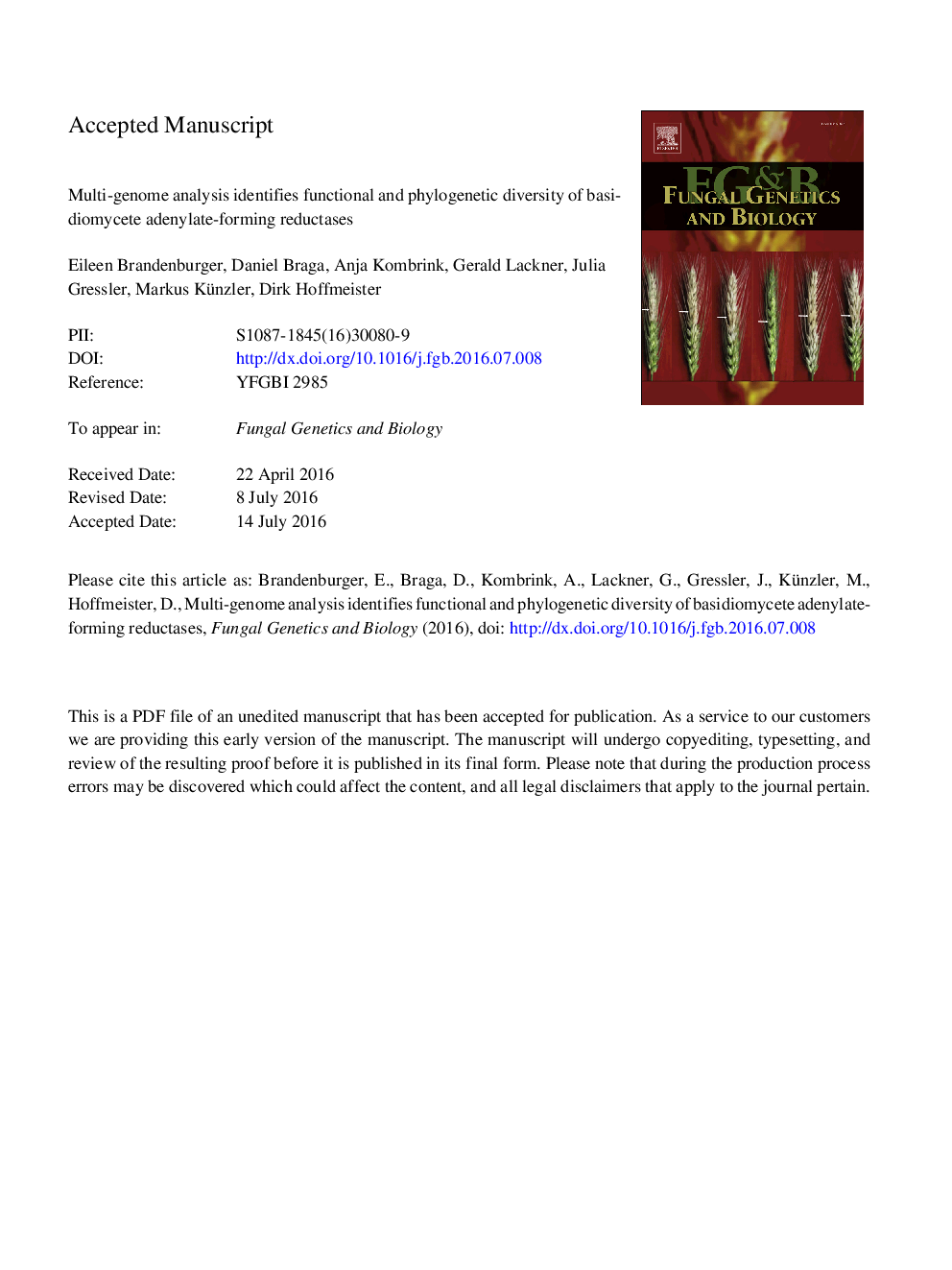| Article ID | Journal | Published Year | Pages | File Type |
|---|---|---|---|---|
| 8470448 | Fungal Genetics and Biology | 2018 | 23 Pages |
Abstract
Among the invaluable benefits of basidiomycete genomics is the dramatically enhanced insight into the potential capacity to biosynthesize natural products. This study focuses on adenylate-forming reductases, which is a group of natural product biosynthesis enzymes that resembles non-ribosomal peptide synthetases, yet serves to modify one substrate, rather than to condense two or more building blocks. Phylogenetically, these reductases fall in four classes. The phylogeny of Heterobasidion annosum (Russulales) and Serpula lacrymans (Boletales) adenylate-forming reductases was investigated. We identified a previously unrecognized phylogenetic branch within class III adenylate-forming reductases. Three representatives were heterologously produced and their substrate preferences determined in vitro: NPS9 and NPS11 of S. lacrymans preferred l-threonine and benzoic acid, respectively, while NPS10 of H. annosum accepted phenylpyruvic acid best. We also investigated two class IV adenylate-forming reductases of Coprinopsis cinerea, which each were active with l-alanine, l-valine, and l-serine as substrates. Our results show that adenylate-forming reductases are functionally more diverse than previously recognized. As none of the natural products known from the species investigated in this study includes the identified substrates of their respective reductases, our findings may help further explore the diversity of these basidiomycete secondary metabolomes.
Related Topics
Life Sciences
Biochemistry, Genetics and Molecular Biology
Cell Biology
Authors
Eileen Brandenburger, Daniel Braga, Anja Kombrink, Gerald Lackner, Julia Gressler, Markus Künzler, Dirk Hoffmeister,
